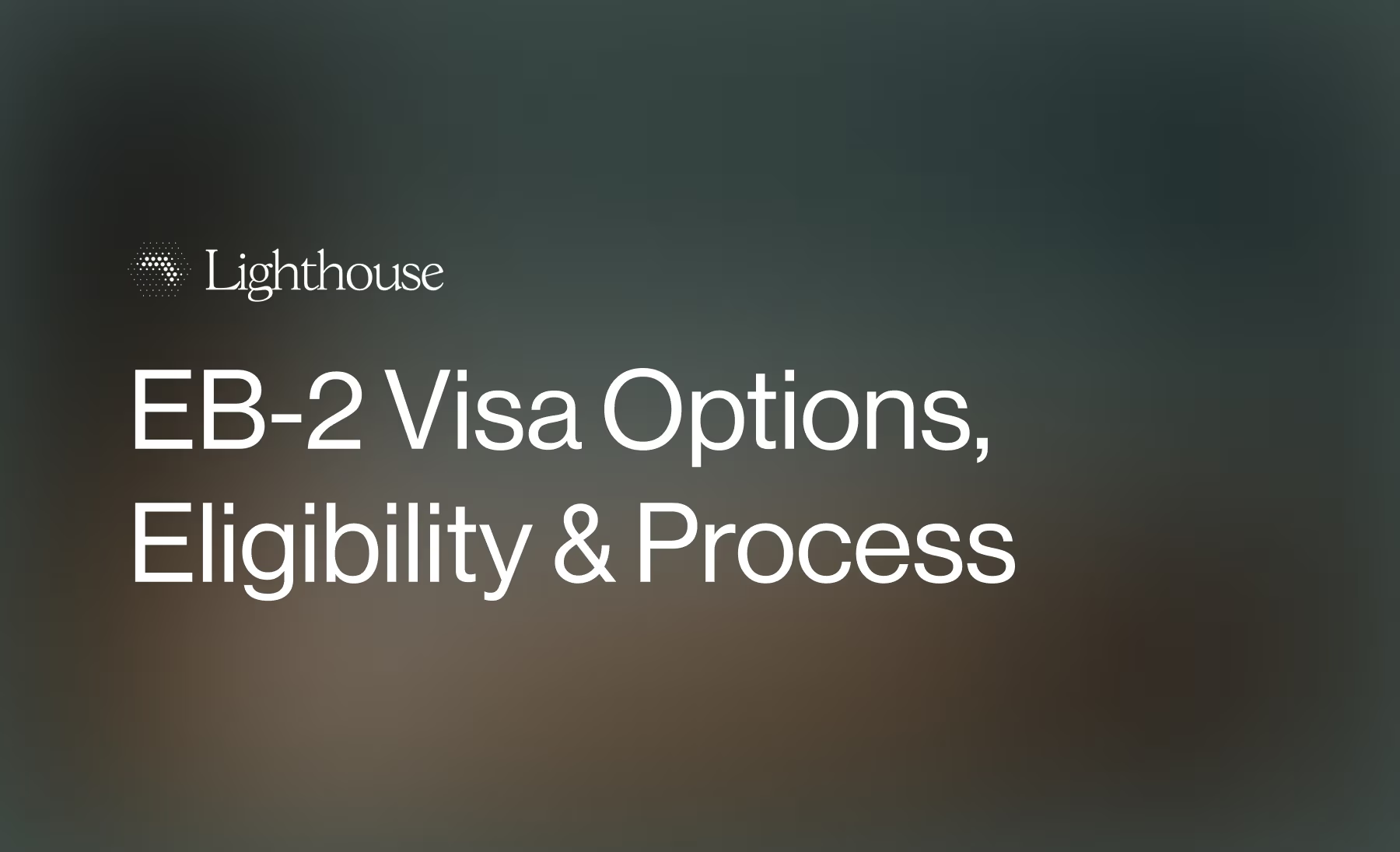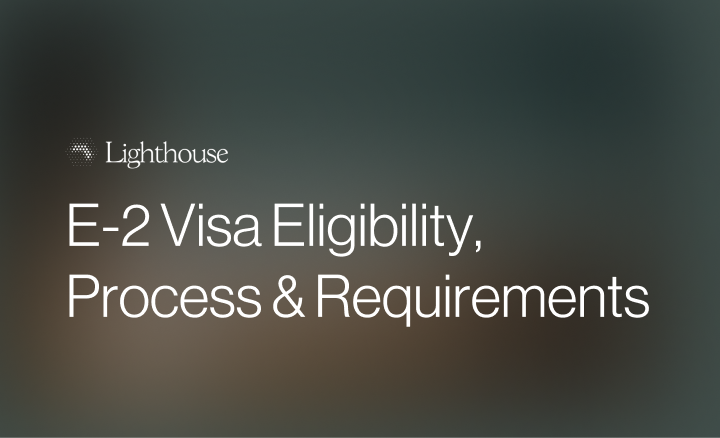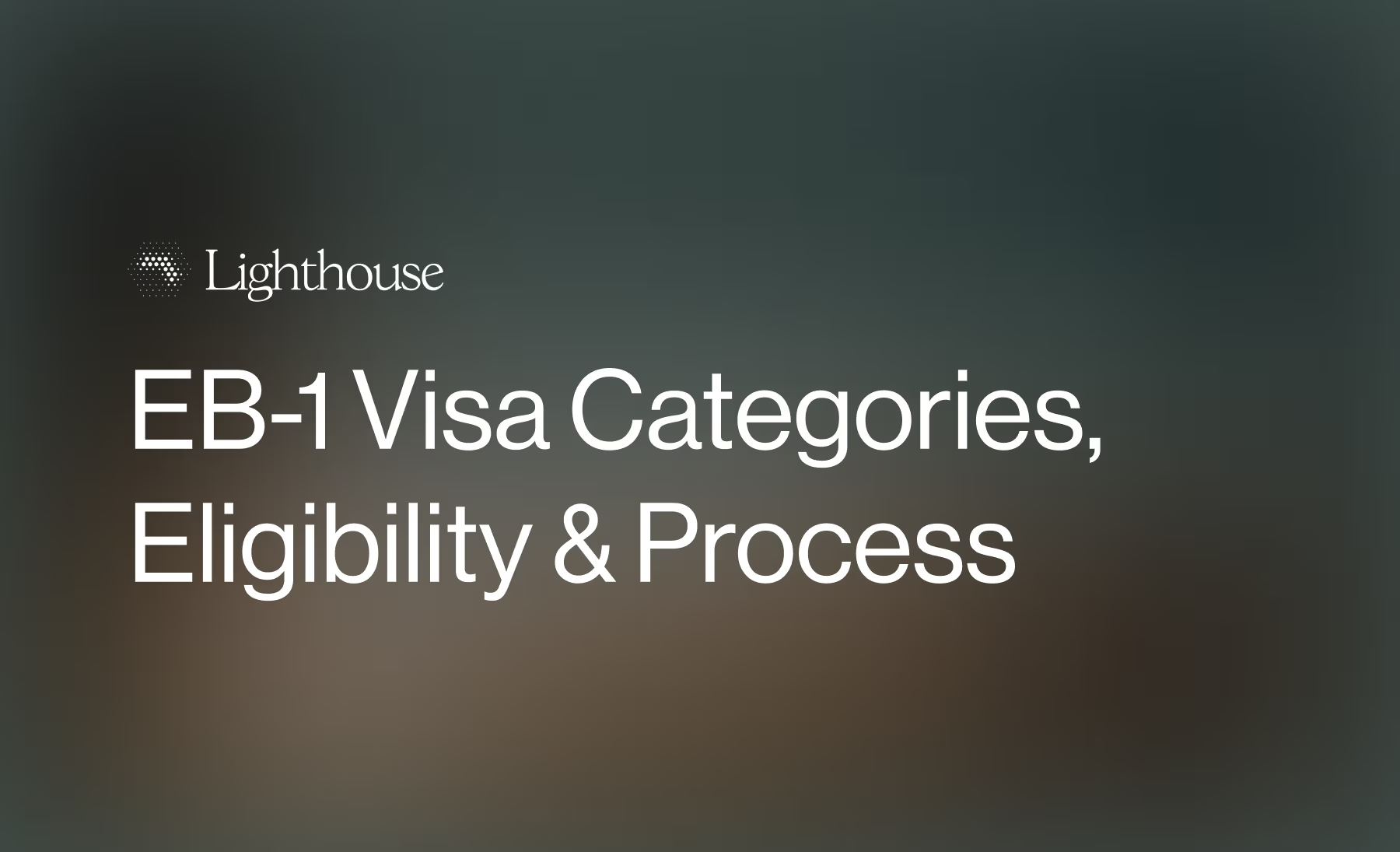Form ETA-9035 Explained
Everything you need to know about Form ETA-9035 for Labor Condition Applications.


Get a clear walkthrough of Form ETA-9035 —the Labor Condition Application that every H-1B, H-1B1, and E-3 employer must file with the U.S. Department of Labor. This guide explains what the form does, who files it, and how to complete each stage correctly and on time.
What is a labor condition application?
The LCA (Form ETA-9035) is a mandatory certification that U.S. employers must obtain from the Department of Labor before filing an H-1B, H-1B1, or E-3 petition. It’s the employer’s formal promise to pay fair wages and maintain lawful working conditions when hiring foreign professionals.
Through this form, employers make four legally binding attestations about wages, workplace standards, worker notification, and labor disputes—helping protect both foreign and U.S. workers from unfair wage practices. No petition can proceed without a certified LCA from the DOL.
The process operates through the Foreign Labor Application Gateway (FLAG) system, where employers submit Form ETA-9035E electronically. Once certified, this document becomes a critical component of the USCIS petition package.
Lighthouse helps employers prepare compliant Labor Condition Applications aligned with H‑1B, H‑1B1, and E‑3 petitions through its tech‑powered platform.
Who must file the labor condition application
U.S. employers must file Form ETA-9035 whenever they want to sponsor a foreign worker for H-1B, H-1B1 (Chile/Singapore), or E-3 (Australia) status. The employer (never the employee) takes responsibility for this filing and all related attestations.
Filing is always the employer’s responsibility—not the employee’s. This requirement applies to every sponsoring situation:
New hires: Any company bringing in foreign talent for specialty occupations must file an LCA before submitting Form I-129 (Petition for a Nonimmigrant Worker) to USCIS.
Job changes: When an H-1B worker switches employers, the new company must file a fresh LCA covering the new position, wage, and work location.
The Labor Condition Application creates legal obligations that extend throughout the employment relationship. Employers cannot transfer these responsibilities to the foreign worker or require them to pay LCA-related costs under federal regulations.
H‑1B employers and other H‑1B‑dependent companies must certify that all material facts in their submission are accurate and that no misrepresentation is made on the date of filing.
Purpose and legal foundation
The Labor Condition Application exists under Immigration and Nationality Act Section 212(n) and 20 CFR 655 Subpart H to ensure that hiring foreign professionals does not adversely affect U.S. workers or suppress wages in specialty occupations.
The Department of Labor reviews each LCA for completeness (not job quality), relying on employer attestations backed by potential penalties for false statements.
These rules, established under INA §212(n) and 20 CFR 655 Subpart H, ensure that hiring foreign professionals does not lower U.S. wages or working conditions.
Required attestations on the LCA
Every Labor Condition Application asks the employer to make four legally binding promises—called attestations—about wages, working conditions, and the absence of labor disputes. These statements are certified under penalty of perjury:
Wage attestation
The employer must pay each H‑1B worker at least the higher of the prevailing wage or the actual wage paid to U.S. workers with similar experience in the area of intended employment.
Working conditions attestation
The employer certifies that employing H-1B workers will not adversely affect the working conditions of U.S. workers similarly employed.
No strike or lockout attestation
At the time of LCA filing, there must be no strike, lockout, or other labor dispute in the occupation at the place of employment.
Notice attestation
The employer must provide notice of the LCA filing to U.S. workers through posting notice at the worksite for 10 business days, providing electronic notice to employees if the employer customarily uses electronic communication, or notifying the bargaining representative if employees are covered by a collective bargaining agreement.
Notice to any bargaining representative must be documented in the public access file for public examination
How the LCA process works
Step 1: Collect job and employer details
Gather position, wage, and work‑location details plus employer FEIN and contact info.
Step 2: Submit Form ETA-9035E through FLAG
Submit Form ETA‑9035E via FLAG. Employers can cover more than one worker on the same LCA only if all employees are in the same role, at the same wage rate, and filed at the same time. Any later hires require a new LCA.
Step 3: Wait for certification
According to DOL guidance, this Labor Condition Application processing time typically takes about seven business days.
Step 4: Download and retain the certified LCA
Certified LCAs are downloadable.
Validity periods and geographic scope
Certified LCAs remain valid for up to three years maximum, but employers can request shorter periods aligned with their business needs. The validity period must cover the entire requested H-1B, H-1B1, or E-3 employment period.
Each LCA covers only the locations listed; employers must file new or amended LCAs for added worksites or major job changes.
Employer obligations and compliance requirements
Once certified, employers must follow ongoing documentation and wage compliance rules.
Public access file maintenance
Each employer must keep a “public access file” — a binder or digital folder that any member of the public or the Department of Labor can review on request. It includes a copy of the certified LCA, an explanation of how wages were set, and proof that other employees were notified of the filing.
The file must remain accessible during the foreign worker's employment and for one year afterward.
All records must be available for public examination upon request by the Wage and Hour Division of the U.S. Department of Labor.
Wage and hour compliance
Throughout the employment period, employers must pay at least the wage stated in the certified LCA and maintain regular payroll records documenting compliance.
Notification and posting obligations
Before filing the LCA, employers must provide notice to U.S. workers through posting at the worksite, electronic communication, or notification to collective bargaining representatives.
Reporting and amendment responsibilities
If an H-1B worker is terminated early, the employer does not need to file a new LCA for that person, but should withdraw the LCA through the FLAG portal to close the record. This notifies the Department of Labor that the worker is no longer employed under that certification.
Common filing mistakes to avoid
Incorrect wage levels: Choosing wage levels that don't match the actual education and experience requirements can cause USCIS questions and compliance problems.
Missing client locations: Failing to include all work sites, especially client locations for consulting employees, creates compliance risks and may require expensive amendments.
Timing errors: Filing LCAs too early or too late relative to USCIS petition deadlines can create gaps in employment authorization or wasted filing fees.
SOC code mismatches: Using inappropriate occupation codes affects wage determinations and can cause petition denials when job duties don't align with the selected classification.
Filing tips and best practices
Accurate SOC code selection. Choose the Standard Occupational Classification code that best matches the actual job duties, not just the job title.
Finding the correct prevailing wage. Before filing Form ETA-9035, employers must determine the prevailing wage—the typical pay for the job in that area. This rate comes from the Department of Labor’s Online Wage Library or a state workforce agency. Employers choose one of four wage levels based on job complexity, education, and experience requirements and document the calculation in the public access file.
Complete location information. List every location where the employee will work, including temporary assignments or client sites.
Timeline coordination. File LCAs with sufficient time for the processing period plus any potential correction requests.
Documentation standards. Maintain detailed records of all LCA-related activities, including posting documentation, wage calculations, and compliance monitoring.
Confirm the labor condition statements on Form ETA‑9035 align with all supporting documentation in the public access file.
How the LCA connects to other visa processes
The Labor Condition Application links the Department of Labor, USCIS, and the Department of State in one compliance chain. Each agency checks that the same details—wages, job duties, and work locations—remain consistent across filings.
Department of Labor: Reviews and certifies LCAs, ensuring wage and working condition protections through the FLAG system.
USCIS: Relies on certified LCAs when adjudicating Form I-129 petitions for H-1B specialty occupation workers, H-1B1 professionals from Chile and Singapore, and E-3 Australian specialty workers.
Department of State: Reviews certified LCAs during visa stamping interviews at U.S. consulates worldwide, ensuring consistency between DOL certifications and actual employment terms.
All three agencies must have consistent information about job duties, wages, work locations, and employment periods. Discrepancies between LCA details and USCIS petitions can cause delays or denials.
This multi-agency process ensures that temporary worker programs maintain integrity across the entire immigration system while providing appropriate protections for both foreign workers and the U.S. labor market.
LCAs apply only to H-1B-type visas, but understanding their timing and documentation helps coordinate other visa programs like L-1 and J-1, which carry similar wage and record-keeping standards.
Get expert LCA support
The Labor Condition Application process requires precision across multiple regulatory requirements, proper wage calculations, and careful coordination with USCIS petition timing. Small errors in SOC codes, wage determinations, or location listings can delay cases or create compliance problems throughout the employment period.
Lighthouse helps employers prepare compliant Labor Condition Applications that align seamlessly with H-1B, H-1B1, and E-3 petitions. Our platform provides eligibility evaluation to identify the correct visa pathway, document preparation that meets DOL and USCIS standards, dedicated case management with timeline tracking, and expert legal review to strengthen applications.
Get started with Lighthouse to streamline your Labor Condition Application process.
Frequently asked questions
What is the Labor Condition Application processing time?
The Department of Labor typically processes LCAs within about seven business days of electronic submission through the FLAG system, according to DOL guidance. Processing can take longer if the agency asks for corrections to wage levels or worksite details. Employers should file early so the certified LCA is ready before the Form I‑129 petition goes to USCIS.
Do employees need to file the LCA themselves?
No. The LCA belongs to the employer, and only U.S. employers or their authorized representatives can submit Form ETA‑9035 through the Department of Labor’s portal. Workers cannot file an LCA on their own because the attestations are legally binding on the employer.
Can one LCA cover multiple workers?
Yes. A single Form ETA‑9035 may list several employees if they share the same occupation, wage rate, worksite locations, and period of employment. If any of those factors differ, the employer must file separate LCAs to remain compliant.
When must a new LCA be filed?
A new or amended LCA is required whenever a foreign worker moves to a new worksite, job duties change materially, or the wage rate is significantly adjusted. Employers also need a fresh LCA when extending employment beyond the original end date. Minor title changes with no substantive impact on duties usually don’t require refiling.
Can an LCA be withdrawn or cancelled?
Yes. Employers can withdraw a pending or certified LCA through the FLAG portal if the job is no longer available or the worker won’t be hired. Timely withdrawal helps keep the employer’s record accurate and demonstrates good‑faith compliance during any future DOL audit.
What happens if an LCA expires during H-1B employment?
The worker may continue working through the valid period on the USCIS approval notice, but a new LCA is required for any extension or amendment. The updated LCA must match the revised dates, wage level, and place of employment listed in the extended petition.
Are there penalties for LCA violations?
Yes. The Department of Labor may levy civil fines, require payment of back wages, and suspend or bar an employer from filing future H‑1B cases. Willful violations can also trigger an investigation by the Wage and Hour Division and affect eligibility for non-immigrant visa programs.
How long must employers maintain LCA documentation?
Employers must keep the public access file available for inspection throughout the worker’s employment and for one year after it ends. Payroll and wage records supporting the certified LCA should remain on file for at least three years to satisfy DOL record‑retention rules and audit requests.
Lighthouse provides expert guidance and legal review to strengthen your case.
From document prep to USCIS submission, Lighthouse ensures your petition meets every requirement.

%201.svg)




